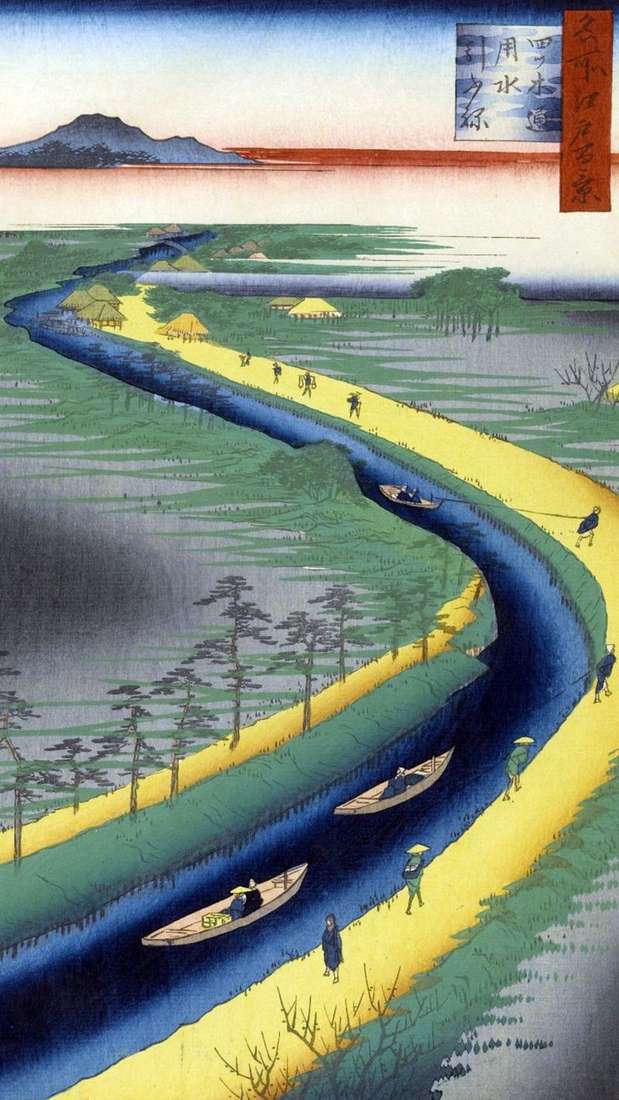
The Etsugi canal was built in the early 17th century to provide drinking water to the Khondze and Fukagawa areas. The source was in Kawarasone Tamai on the Moto-arakawa river. The canal passed through the village of Etsugi to Mukojima. After a century, the water from the canal was not used as a drinking water, since after the tide the sea water got into the canal. The canal was used to irrigate rice fields, as well as to transport cargo by barges and boats for three kilometers from the village of Etsugi to Kamaari-mura, visible in the background of the engraving.
Near the village of Etsugi, the passage of boats with oars was particularly difficult, since the canal in this place was shallow, swampy and narrow, only three meters wide. To the bow of the boat tied a rope so that the local peasants from the shore could pull it through shallow water. This was an additional earnings for the peasants. Eventually, small pleasure boats began to appear here for two or three passengers, which were pulled by “barge haulers”. It was the only channel in Edo where human cravings were used. In the second variant the blue strip in the middle of the river emphasizes its depth. Conditional bands of horizontal clouds become wider and lighter, giving the blue color of the sky a pinkish hue. The square cartouche became blue.
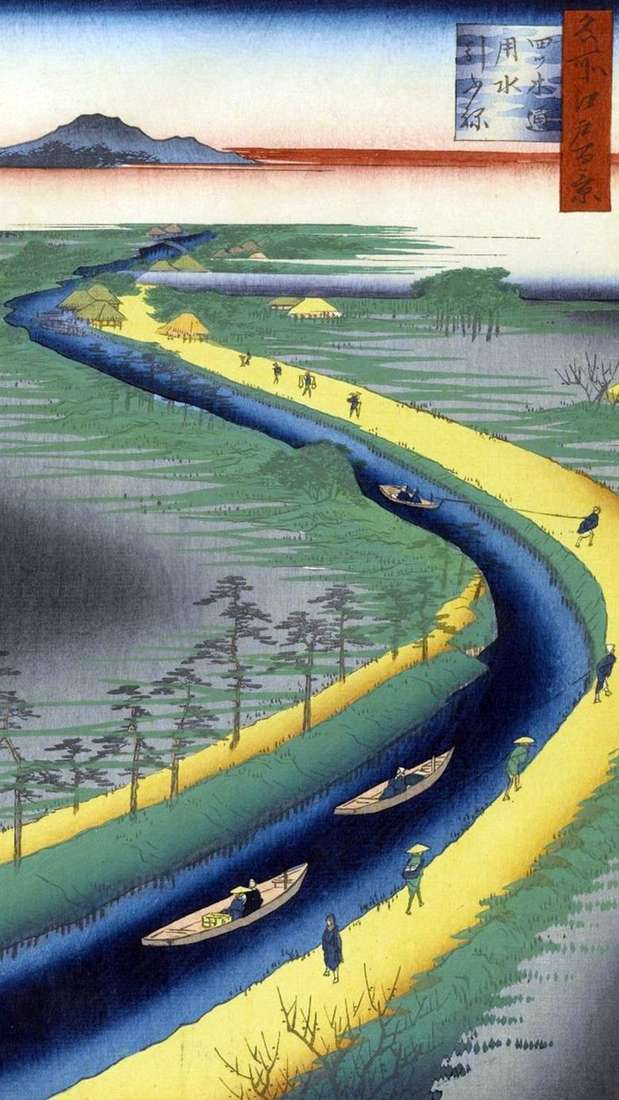 Remolcadores en el canal Etsugi-Dori – Utagawa Hiroshige
Remolcadores en el canal Etsugi-Dori – Utagawa Hiroshige Embankment Koumae by Utagawa Hiroshige
Embankment Koumae by Utagawa Hiroshige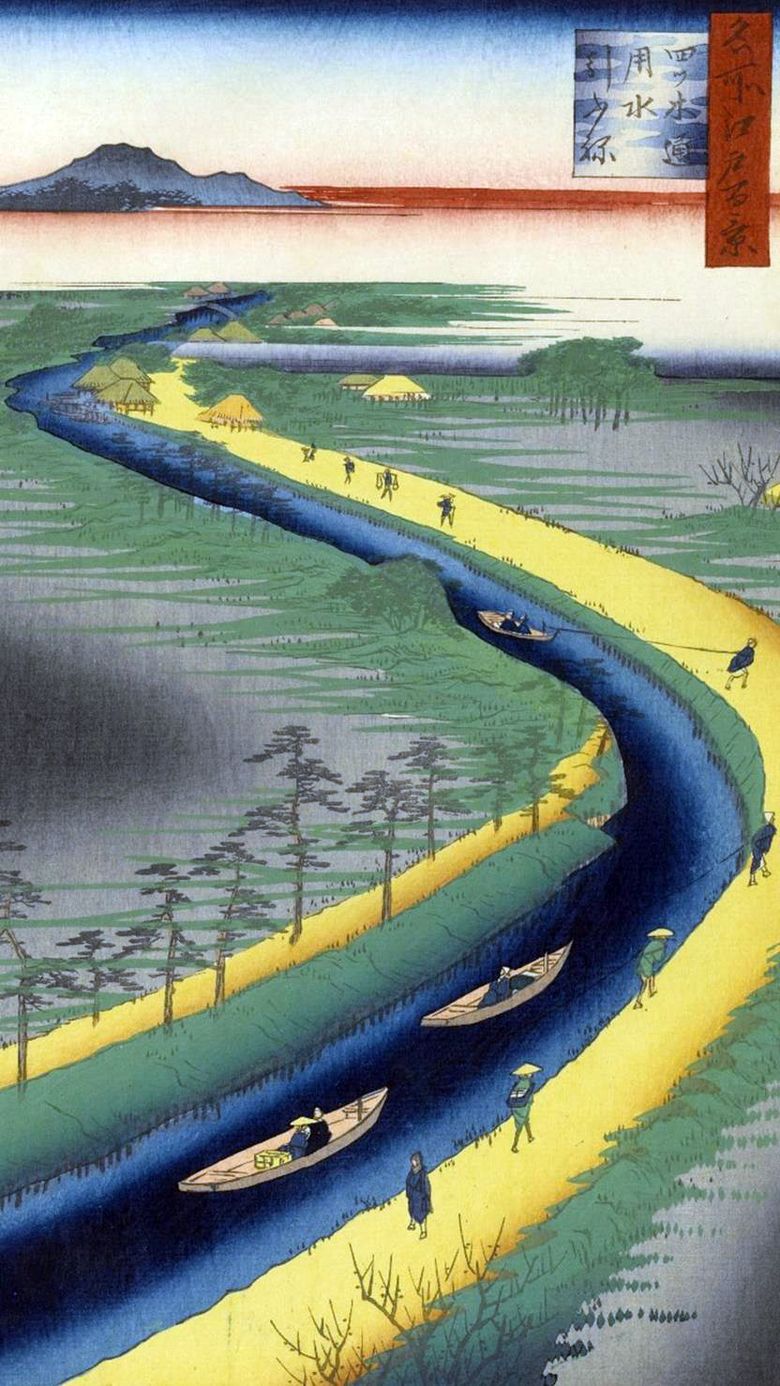 Bateaux remorqueurs sur le canal Itsugi Dori – Utagawa Hiroshige
Bateaux remorqueurs sur le canal Itsugi Dori – Utagawa Hiroshige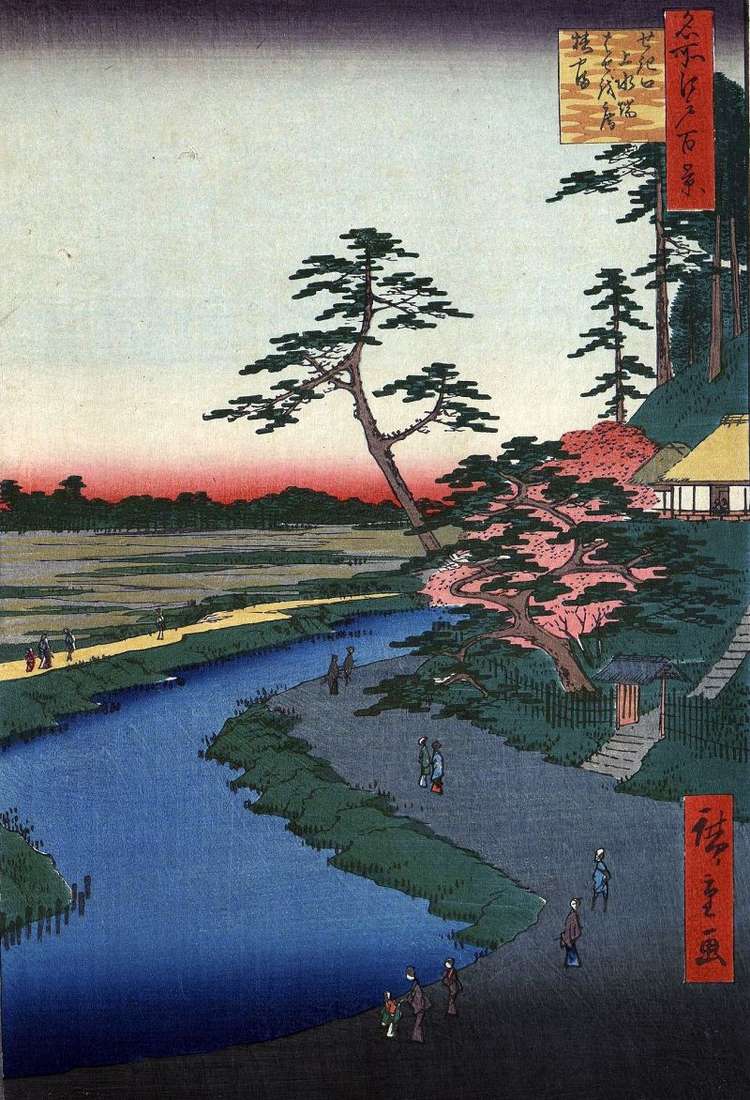 Hut &; “Bassein on Mount Tsubakiyama near the aqueduct in the Sekiguchi district by Utagawa Hiroshige
Hut &; “Bassein on Mount Tsubakiyama near the aqueduct in the Sekiguchi district by Utagawa Hiroshige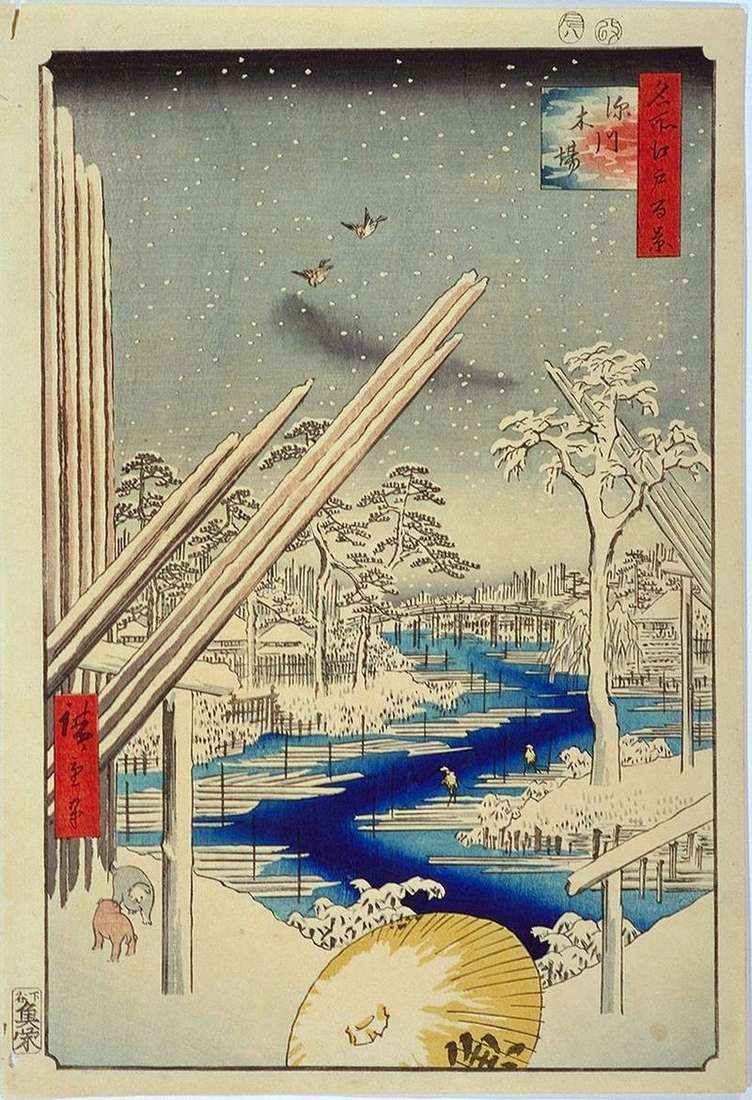 Wood storage in Fukagawa by Utagawa Hiroshige
Wood storage in Fukagawa by Utagawa Hiroshige The Regokubasi Bridge and the Okavabat Quay by Utagawa Hiroshige
The Regokubasi Bridge and the Okavabat Quay by Utagawa Hiroshige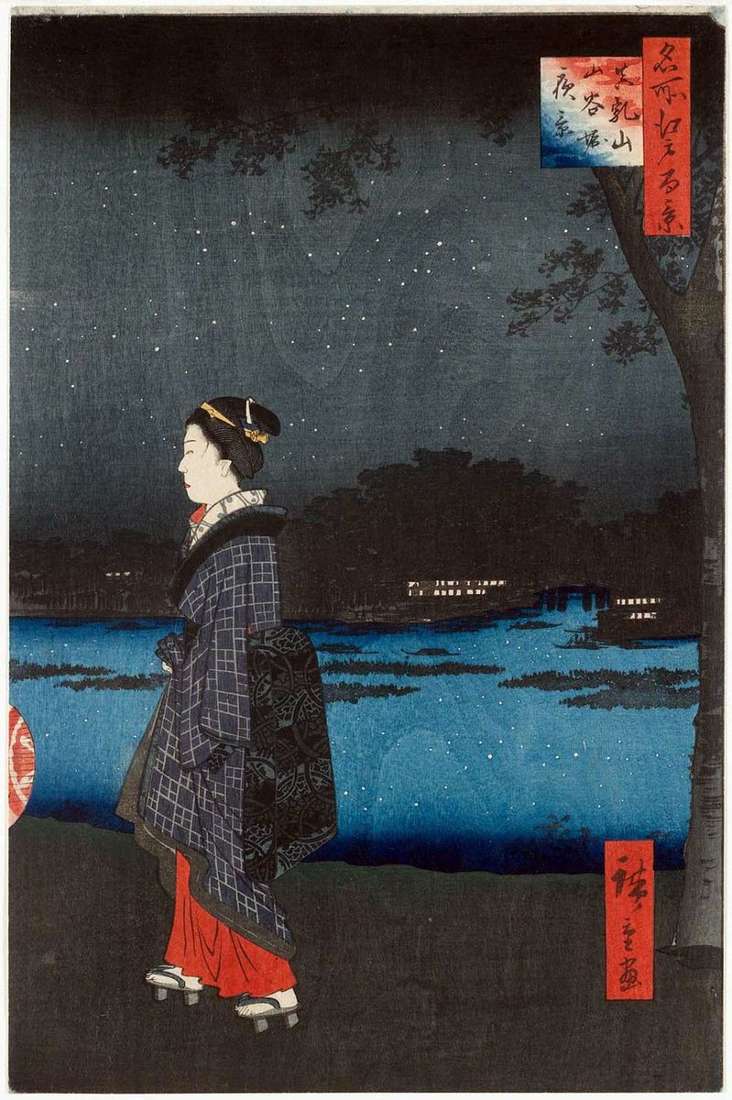 Night view of Matsutiyama and Canal of Sanyavori by Utagawa Hiroshige
Night view of Matsutiyama and Canal of Sanyavori by Utagawa Hiroshige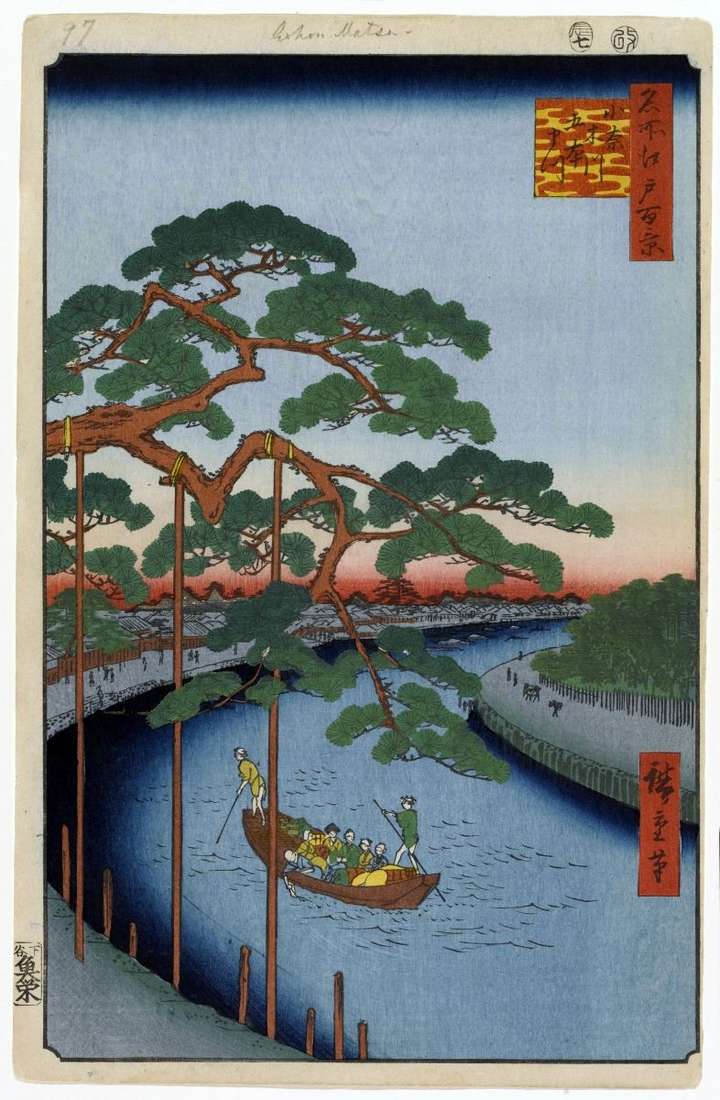 Pine Goyhonmatsu on the Onagigawa Canal by Utagawa Hiroshige
Pine Goyhonmatsu on the Onagigawa Canal by Utagawa Hiroshige